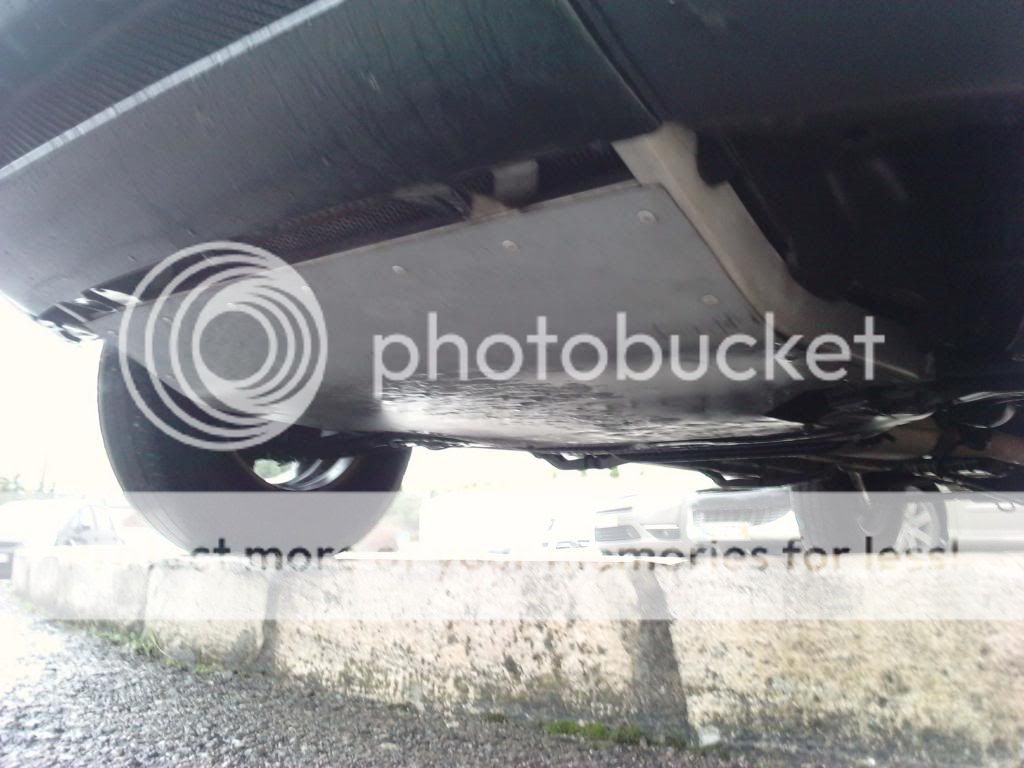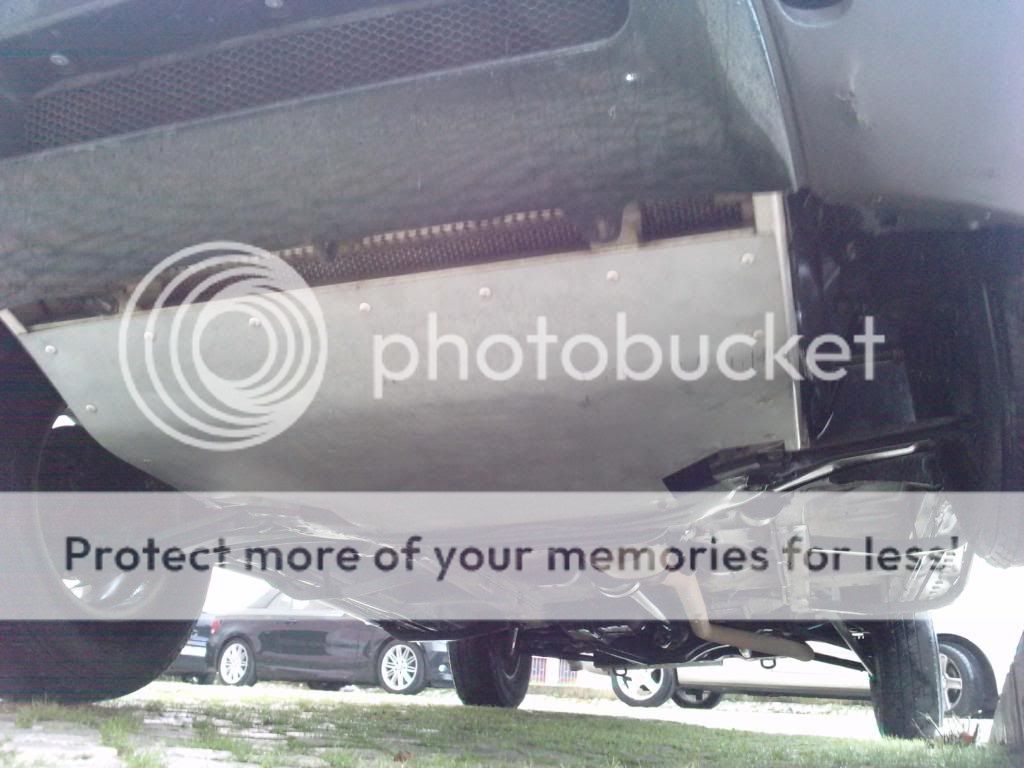I spent a few hours over the weekend researching Freelander undertrays, and have found quite a bit of information posted by others regarding their solutions. So I thought I'd start my own thread on how I plan to do mine.
By way of background, my Hippo is a 1.8 Petrol, standard in everyway bar a set of Yoko Geolander AT-S tyres (standard size).
Ground clearance is therefore stadard. When I first got the car, the plastic insert of the undertray was held in by cable ties, and some master mechanic had cut slots in it to make oil changes more tricky (probably meant to be easier, but I haven't found removing the undertray too challenging). I replaced the cable ties with stainless bolts and nylocs.
On my first green lane session (organised by Dan - thanks!), we found a deep rutted track that Dan's D2 had no problem with, but I ran out of ground clearance (d'oh!). I extracated myself, but the plastic undertake came loose and eventually tore off.
By the days end, and after some biggest puddles, the engine started to misfire badly. Muddy water had managed to get in under the HT cover on the top of the engine! Nice.Drove better once the HT circuit dried out of course
I would like to do more greenlanes. I don't really expect to take the car serious "off roading", so no plans for winches, massive lifts etc for this car. Well, none yet anyway.
The purpose of the replacement is something a little sturdier than the original, but the principle purpose is to function as a splash guard. Technically, not really a sump guard - the K-series sump is relatively high and out of the way I think?
Based on this brief, I am thinking of a relatively lightweight replacement of the plastic insert with 2mm alloy sheet, based on the dimensions of the plastic original, but extending a little further back so that the rear of the alloy tray is bolted directly to the cross member rather than via the little steel brackets of the original.
Without too much added weight, the undertray should then be easy to remove for later servicing.
It won't be a full-on hard core sump guard.
To this end, I have a 1000x700mm 2mm thick alloy sheet to play with.
What I need to decide is:
1. To use the original mounting backets as used by the plastic undertray.
2. Do away with the original plastic brackets, but bend the alloy such that it slots into the perimeter rail, and pop-rivet it from above.
3. Make the undertray a little wider, and pop-rivet it into place from below.
The majority of the sump guards I've seen are the latter. It looks like the easiest/simplest solution.
Any thoughts folks? Will come back later with the dimensions of the original plastic tray...
By way of background, my Hippo is a 1.8 Petrol, standard in everyway bar a set of Yoko Geolander AT-S tyres (standard size).
Ground clearance is therefore stadard. When I first got the car, the plastic insert of the undertray was held in by cable ties, and some master mechanic had cut slots in it to make oil changes more tricky (probably meant to be easier, but I haven't found removing the undertray too challenging). I replaced the cable ties with stainless bolts and nylocs.
On my first green lane session (organised by Dan - thanks!), we found a deep rutted track that Dan's D2 had no problem with, but I ran out of ground clearance (d'oh!). I extracated myself, but the plastic undertake came loose and eventually tore off.
By the days end, and after some biggest puddles, the engine started to misfire badly. Muddy water had managed to get in under the HT cover on the top of the engine! Nice.Drove better once the HT circuit dried out of course
I would like to do more greenlanes. I don't really expect to take the car serious "off roading", so no plans for winches, massive lifts etc for this car. Well, none yet anyway.
The purpose of the replacement is something a little sturdier than the original, but the principle purpose is to function as a splash guard. Technically, not really a sump guard - the K-series sump is relatively high and out of the way I think?
Based on this brief, I am thinking of a relatively lightweight replacement of the plastic insert with 2mm alloy sheet, based on the dimensions of the plastic original, but extending a little further back so that the rear of the alloy tray is bolted directly to the cross member rather than via the little steel brackets of the original.
Without too much added weight, the undertray should then be easy to remove for later servicing.
It won't be a full-on hard core sump guard.
To this end, I have a 1000x700mm 2mm thick alloy sheet to play with.
What I need to decide is:
1. To use the original mounting backets as used by the plastic undertray.
2. Do away with the original plastic brackets, but bend the alloy such that it slots into the perimeter rail, and pop-rivet it from above.
3. Make the undertray a little wider, and pop-rivet it into place from below.
The majority of the sump guards I've seen are the latter. It looks like the easiest/simplest solution.
Any thoughts folks? Will come back later with the dimensions of the original plastic tray...





